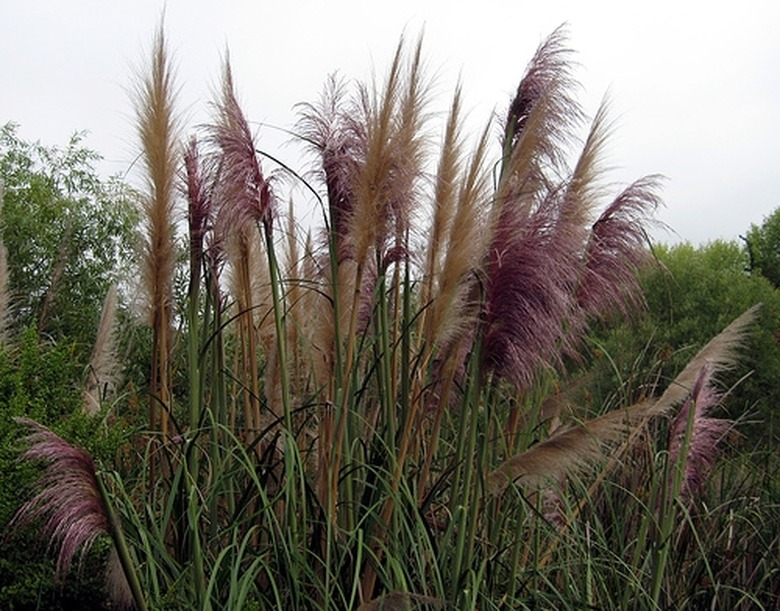How Fast Does Pampas Grass Grow?
Definition
Definition
Pampas grass, also known as Cortaderia selloana, is native to the moist South American grasslands, known also as the pampas. The fast-growing grass can live in almost any habitat, but it grows especially well in rich soil and mild climates. Since it can grow 6 to 10 feet tall, each tussock or clump should be given plenty of space between it and other plantings. The leaves are gray or bluish-green with narrowly tapering tips and sharp, serrated edges. Pampas grass can be used as an ornamental plant in a garden or lawn or used as a hedge due to its size. Large, flowering stalks range in color from white, yellow and pink. They grow from the base of the tussock and can reach 12 feet in height. During its lifespan, each plant can produce more than 1 million seeds. Pampas grass is banned in California and Hawaii, where it is listed as an invasive weed.
Life Cycle
Life Cycle
Pampas grass is a perennial. The plant goes dormant during the winter and resumes growth in the spring. The plants germinate in the spring, slowly producing bulbs the first year. Most plants take several years before flowering, especially on drier sites. Flowering occurs primarily in late summer. Plants are fully grown, from seed germination to maturity, in 2-4 years. The center stems of pampas grass will die after one growing season, but new shoots of leaves arise from the edge of the plant to increase its size. The lifespan of pampas grass is 10-15 years.
Maintenance
Maintenance
Location: In heavy frost zones, keep the plant sheltered. Plants prefer full sun and rich, well-drained soil.
Pruning: While pampas grass is a very low-maintenance plant, it must be pruned back to 2-3 feet every fall. To encourage growth, cut the plant back before it goes dormant. To discourage growth, cut back after the plant goes dormant. Also exercise extreme caution when pruning due to the razor-sharp edges of the leaves.
Watering: Pampas grass is subject to root rot, so do not water excessively.
Removal: Pampas grass is very difficult to remove: The roots grow extremely deep. Seedlings to small plants can be dug up by hand. Larger plants should be removed using heavy machinery.
